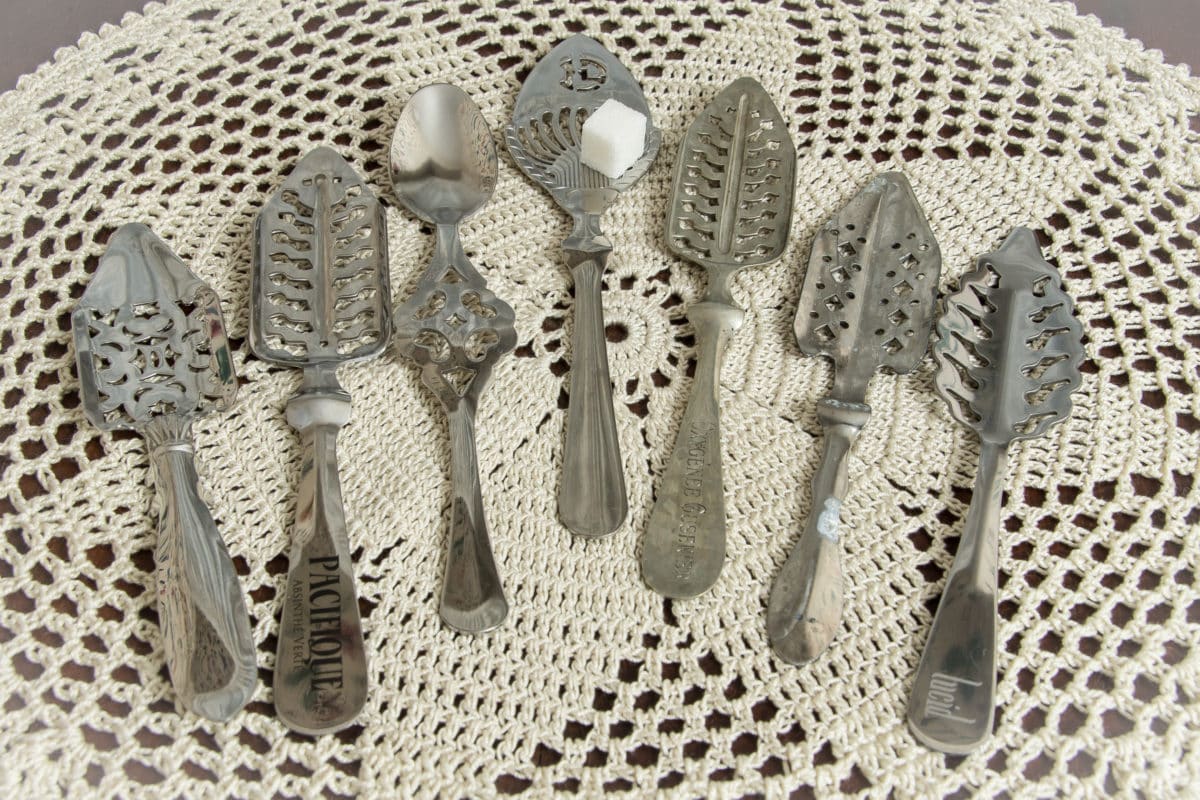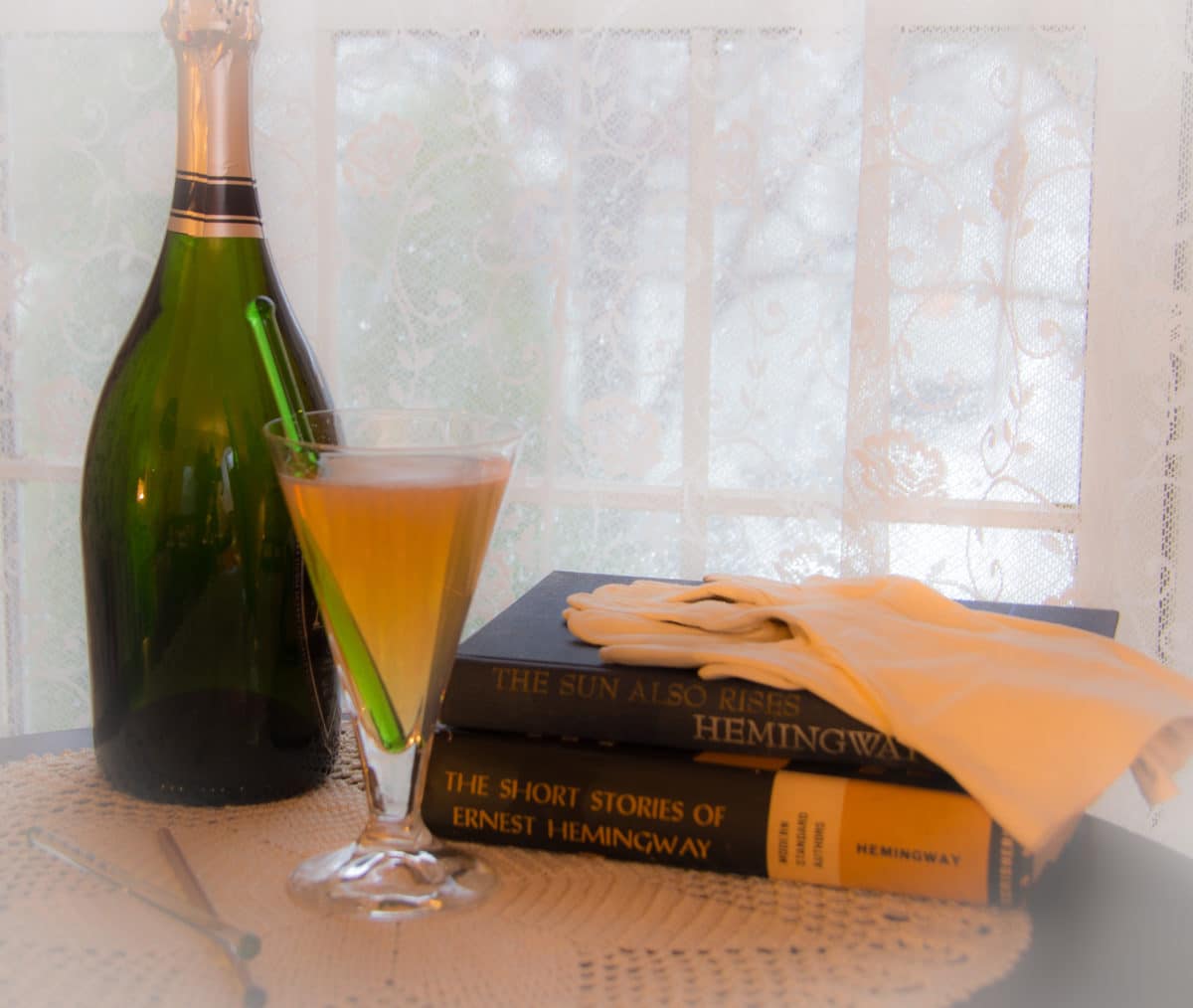Mention absinthe to most people these days and they immediately conjure images of insane, one-eared artists, drunken, bohemian writers, or maybe even wild-eyed murderers awash in their own family’s blood. These stories of absinthe drinkers from La Belle Epoch (c. 1870-1914) pervade the drink’s tainted history, and indeed were partially responsible for absinthe being banned in the United States and most of Europe for almost a hundred years.
The culprit was thujone, a chemical present in the wormwood plant, one of absinthe’s three main ingredients. Thujone was thought to be a dangerous hallucinogen, responsible for the deranged behaviors of habitual absinthe drinkers. The fact that the more infamous absinthe drinkers were deranged not from the absinthe but from mental illness, alcoholism (via absinthe or not), or from drinking cheaply made absinthe that contained lead, was overlooked and pressure from France’s powerful wine industry led to the end of the absinthe era.
In the 1990s, absinthe began to make a comeback. It was proven that the minute amounts of thujone in absinthe were perfectly safe, and there was no longer a reason to ban its manufacture.
Absinthe was originally made in France and Switzerland (the countries disagree on who was first, of course), but these days excellent quality absinthe is made in many countries, including the United States. It is often referred to as the Green Fairy because most absinthes (not all) are naturally green. The three main ingredients are wormwood, anise, and fennel, known as “the Holy Trinity.” Beyond that every absinthe has its own specific recipe which may include herbs such as cardamom, melissa, angelica, lavender, etc. Connoisseurs will adamantly warn against any absinthe that has added sugar or is artificially colored, and also against any absinthe that advertises as being or even hints as being hallucinogenic; this is a strategy that relies on absinthe’s corrupted reputation to sell booze to thrill-seekers. (Czech-made absinthes are notorious for this, although there are several legitimate and excellent brands from the Czech Republic). A serious absinthe drinker will also be horrified at the popular method of setting the absinthe on fire before drinking it. This is a gimmick made to equate absinthe with the drug culture; it is a modern technique, never used during La Belle Epoch, and not only does it ruin the taste of a good absinthe (imagine lighting a fine wine on fire, if that were possible) but it is very dangerous.
And here’s why: the alcohol content of absinthe ranges from 50% to 75%. Put a flame to it and you’ll have a small conflagration in your glass, and any drips along the side of your glass will ignite, and any drips on the table will ignite. For this same reason, one should never drink absinthe straight; it could actually burn your esophagus.
Absinthe is properly served mixed with ice water or in a cocktail. The traditional method is to pour a “dose” of absinthe into a glass (absinthe glasses have a small bowl at the bottom to help measure), then to drizzle three to five parts ice water into the absinthe as slowly as possible to allow the absinthe to properly louche (turn cloudy). Sometimes the water is poured into the absinthe over a cube of sugar; as the water drips onto the sugar cube it dissolves and mixes in to slightly sweeten the absinthe. Special absinthe spoons are used for this, or one can just use a fork perched over the glass. A glass of absinthe prepared in this way should be not much stronger than a glass of wine.

Ernest Hemingway had a different method. He was an avid absinthe drinker and is the reputed inventor of the Death in the Afternoon cocktail: Pour one jigger of absinthe into a glass, then slowly fill with champagne. The flavors complement each other beautifully. However, I do not recommend Hemingway’s advice to “drink three to five of these slowly.” ![]()
